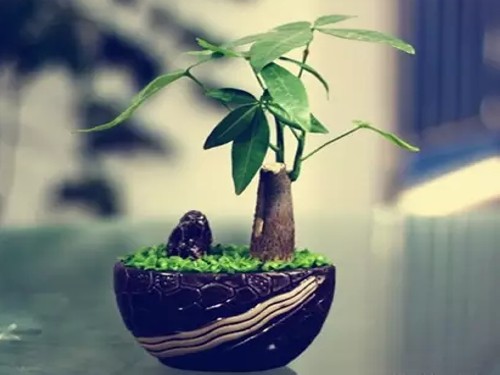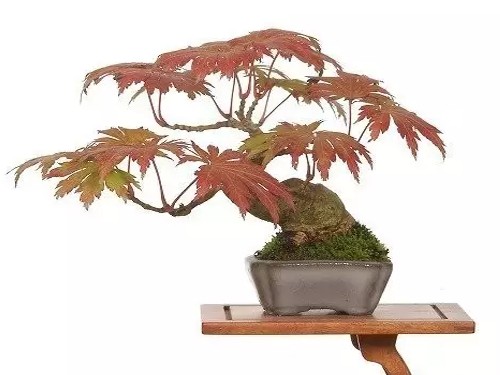Fertilization method of Camellia Bonsai
Fertilization of camellias should be carried out selectively according to different growth stages of camellias. Topdressing is needed during the growing period of camellia, and quick-acting liquid fertilizer and chemical fertilizer should be applied. In the stage of branches and leaves, nitrogen fertilizer or nitrogen-based mixed fertilizer should be applied. Phosphate fertilizer or phosphorus-based mixed fertilizer is needed before flower bud differentiation, bud formation, growth and flowering. The mixed fertilizer based on phosphorus and potassium is the most suitable for autumn and winter.
1. Nitrogen fertilizer promotes spring shoot.
Camellias usually begin to bloom in the shade at about 18 ℃. At this time, bud-destroying fertilizer based on nitrogen fertilizer should be applied once every 10 days until the spring shoot begins to Lignification. If possible, foliar spraying can also be carried out with a mixture of 1000 times of potassium dihydrogen phosphate, 1% urea and 300 times rice vinegar. After many times of root and foliar spraying, the spring shoot will grow very luxuriantly, the leaf can extend to the maximum, and the shoot can accumulate rich nutrients, creating good conditions for flower bud differentiation.
2. increase the application of phosphorus and potassium fertilizer to promote the differentiation of flower buds and form buds.
The spring shoot of camellia is full, and after Lignification, there will be a short period of semi-dormancy. At this time, the camellia changed from vegetative growth to reproductive growth, and the flower buds began to differentiate. If you want to make camellias produce more buds, you should apply more phosphorus and potassium fertilizer, and no or less nitrogen fertilizer. If the small camellias grow mainly, it is still dominated by nitrogen fertilizer, and no or less phosphorus fertilizer is applied. Foliar spraying with 1000 times potassium dihydrogen phosphate, a small amount of borax and rice vinegar can not only control the excessive growth of camellia branches, but also promote and shorten the time of flower bud differentiation, which is beneficial to the formation of flower buds.
3. It is not suitable to apply fertilizer in midsummer, let alone thick fertilizer.
When the weather is hot in midsummer, camellias grow slowly or fall into a semi-stagnant state. It is not suitable to apply fertilizer at this time, and special attention should be paid to not applying thick fertilizer. If the soil is barren, thin liquid fertilizer can be applied in combination with watering to improve the soil quality.
4. Appropriate application of mixed fertilizer based on phosphorus and potassium fertilizer in autumn
The sky is high and cool in autumn, which belongs to the period of nutrient accumulation of camellia plants. In order to survive the winter safely, the mixed fertilizer based on phosphorus and potassium fertilizer can be applied every half a month, combined with foliar spraying to promote plant health and improve the cold resistance of camellias.
5. Dilute phosphate and potassium liquid fertilizer should be applied in winter.
The camellias in the cold winter enter a semi-dormant period. Camellias enter the cellar, vegetative growth has entered dormancy, do not need much fertilizer. However, its reproductive growth has not completely stopped, and it is in the season of flowering or preparing for flowering, so it should be combined with watering and applying thin liquid phosphorus and potassium fertilizer. Do not apply thick fertilizer.
Note:
1. Camellias like cool weather and are afraid of high temperature and heat. When forced to fertilize after the beginning of spring, they must be poured with alum and fertiliser. The production of alum fertilizer water is to add 100g green to 10kg of water, 200g bean cake powder and 1000 g dried poultry dung. Soak for 1 month when it is hot, and mature after 4 months when it is cool.
2. Do not apply too much fertilizer or apply thick fertilizer. This is the characteristic that camellia does not like rich fertilizer, otherwise it will damage the root system and reduce the number of flowers. The base fertilizer of camellia had better be organic fertilizer, such as fermented chicken and duck manure and animal organs, as well as bean cake, fishbone meal and so on. These organic fertilizers have nitrogen, phosphorus, potassium and other components, more comprehensive, and the fertilizer effect is very long. When applied, it can be dried in the sun, crushed into powder, mixed with 6 times the dry soil, and then removed 3cm away from the root of the plant when turning the pot and loading the soil.
3. Phosphate fertilizer is the best fertilizer and nitrogen fertilizer is the auxiliary fertilizer. In addition to applying base fertilizer when potting and changing pots, topdressing should be applied after flowering in April, June and October. Only thin fertilizer can be applied, and it is suitable to make alum fertilizer and water. Too cold and overheating is disadvantageous to the growth and development of camellia. The indoor overwintering temperature should be kept at 3-4 ℃ in winter, shade and cooling should be carried out in time in summer and autumn, and sufficient sunshine should be given in spring and Meiyu season.
Time: 2019-06-10 Click:
- Prev

How to fertilize the small bonsai
Potted plants are cultivated in pots with limited space, limited use of soil, and limited natural nutrients. For the normal growth of potted plants, nutrient supplement is absolutely necessary, so fertilization is also a very important item in the daily management of potted plants. Generally speaking, the three elements of fertilizer refer to nitrogen, phosphorus and potassium.
- Next

Fertilization technique of bonsai in autumn
The general characteristic of tree growth is that the shoot has been Lignified in spring and summer, and a new root and leaf system has been formed, which increases the assimilation area of trees and accumulates nutrients for autumn shoot and flower bud differentiation. The autumn shoot growth and flower bud differentiation of evergreen trees are carried out at the same time, the competition for nutrient distribution is fierce, and vegetative growth is superior to reproductive growth.
Related
- Fuxing push coffee new agricultural production and marketing class: lack of small-scale processing plants
- Jujube rice field leisure farm deep ploughing Yilan for five years to create a space for organic food and play
- Nongyu Farm-A trial of organic papaya for brave women with advanced technology
- Four points for attention in the prevention and control of diseases and insect pests of edible fungi
- How to add nutrient solution to Edible Fungi
- Is there any good way to control edible fungus mites?
- Open Inoculation Technology of Edible Fungi
- Is there any clever way to use fertilizer for edible fungus in winter?
- What agents are used to kill the pathogens of edible fungi in the mushroom shed?
- Rapid drying of Edible Fungi

